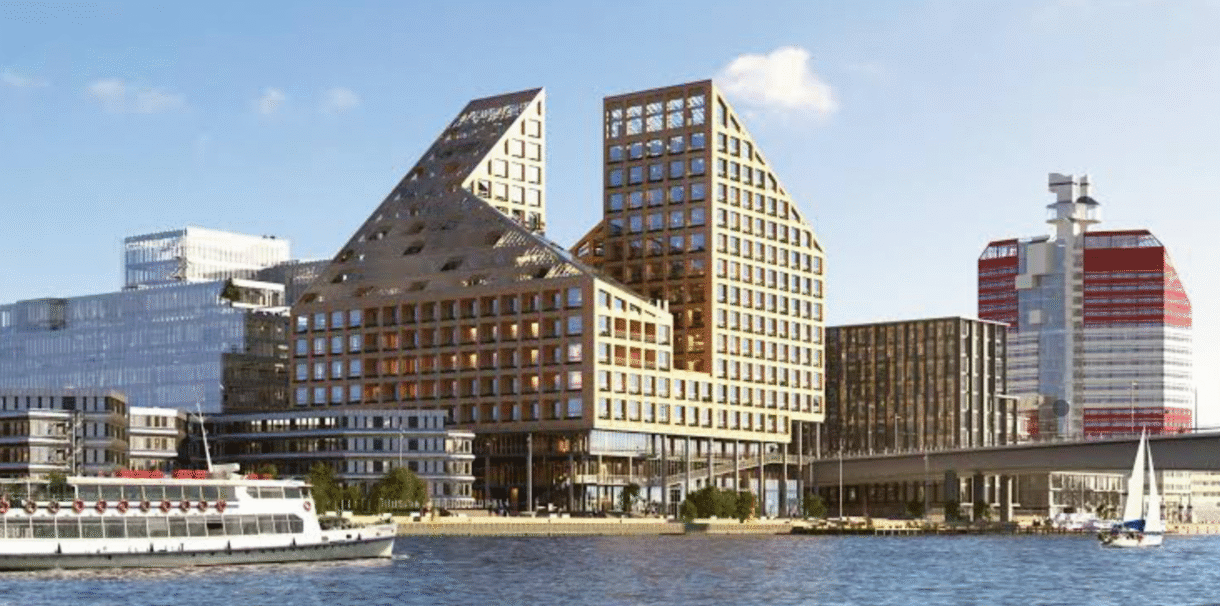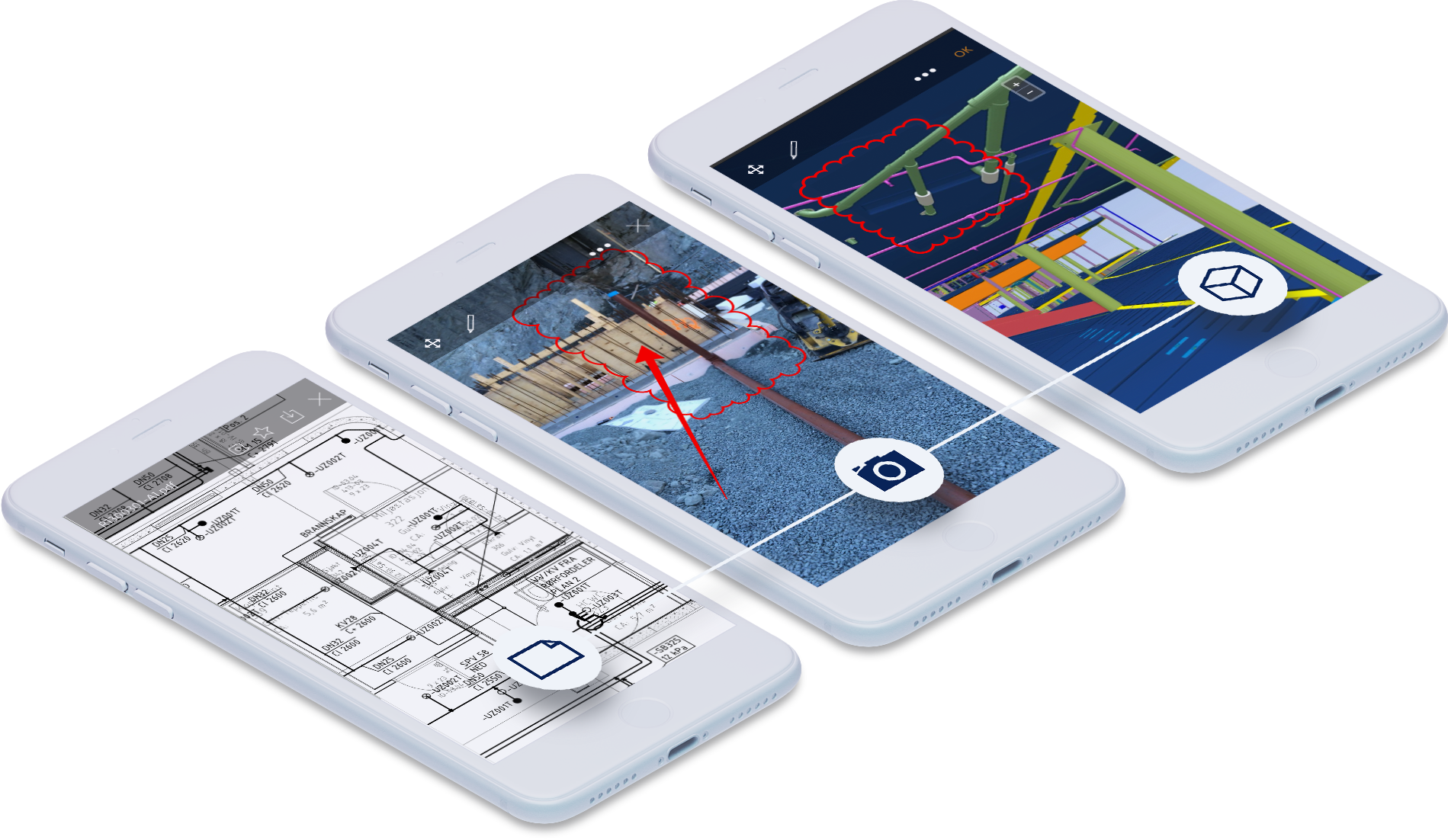Tre viktiga digitala verktyg hjälper entreprenörer att bygga smartare och snabbare: Visare för 3D-modeller, BIM (modellering av byggnadsinformation) för användning på plats, och programvara för byggsamordning. Tillsammans bildar dessa verktyg ett teknikekosystem som avsevärt förbättrar samarbetet, beslutsfattandet och de övergripande projektresultaten.
I byggbranschens snabba tempo och höga insatser är effektivitet inte bara ett mål - det är en nödvändighet. Misstag, förseningar och bristande kommunikation kan kosta både tid och pengar, särskilt i komplexa byggprojekt. Lyckligtvis har tekniken blivit en kraftfull allierad.
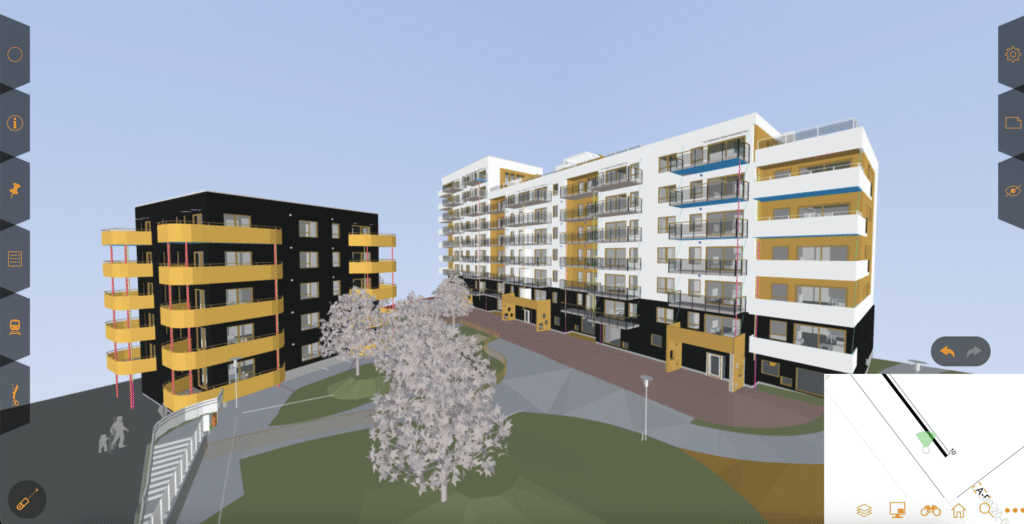
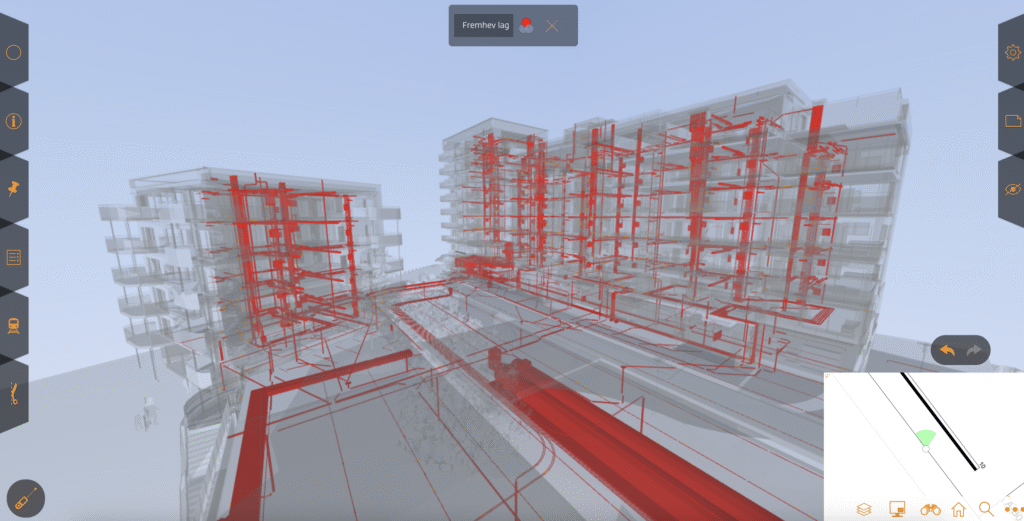
3D-vy av färdig byggnad med trädgårdsområde och asfalterade gångar.
3D-vy av byggnad med markering av rörledningar i marken och ventilationssystem inne i byggnaden.
3D-modellvisare: en tydligare bild på marken
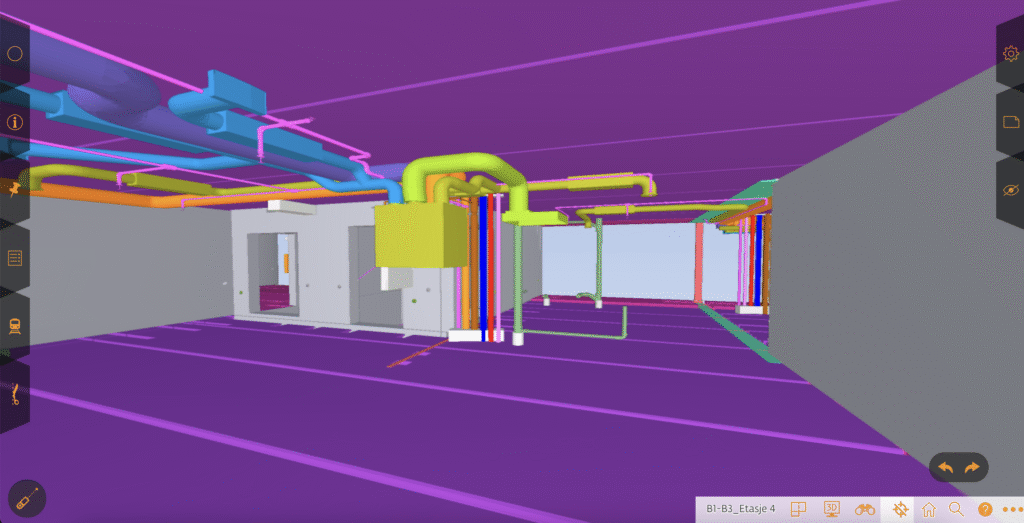
Traditionella ritningar kan vara svåra att tolka, särskilt när det gäller komplexa konstruktioner. A Visare för 3D-modeller gör det möjligt för entreprenörer och fältteam att se en realistisk, interaktiv digital representation av byggnaden innan den byggs. Det handlar inte bara om det visuella - det handlar om förståelse.
Hur det förbättrar effektiviteten:
- Omedelbar klarhet: Entreprenörer kan snabbt förstå vad de bygger utan att behöva avkoda abstrakta 2D-ritningar.
- Problemlösning i farten: Fältarbetarna kan använda surfplattor eller telefoner för att komma åt 3D-modellen på plats, vilket hjälper dem att lösa frågor eller konflikter omedelbart.
- Minskade fel: Genom att se hur komponenterna passar ihop kan man undvika misstag som annars kanske upptäcks först efter installationen.
BIM för entreprenörer på plats: Data där de behövs som mest
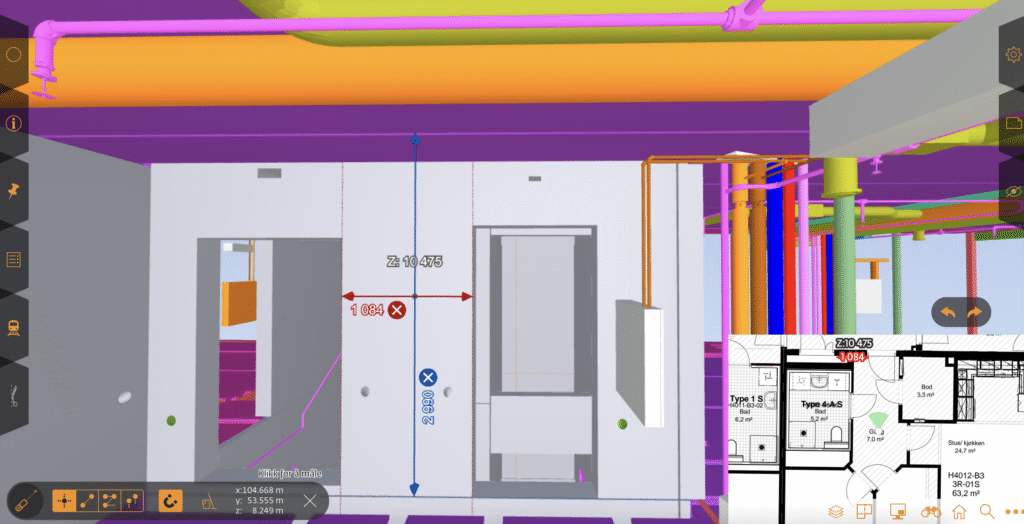
BIM har traditionellt sett använts inom design och planering, men övergången till ta med BIM-modeller på plats ger entreprenörer möjlighet att arbeta mer exakt och självständigt. Moderna BIM-verktyg har nu stöd för mobil åtkomst, vilket gör det möjligt för byggarbetarna att få tillgång till samma information som arkitekter och ingenjörer använder.
Hur det förbättrar effektiviteten:
- Tillgång till data i realtid: Byggarbetarna kan se mått, material och installationssekvenser direkt från BIM-modellen, vilket minskar beroendet av tryckta ritningar och RFI:er.
- Versionskontroll: Alla arbetar utifrån samma, uppdaterade modell och undviker kostsamma omarbetningar som orsakas av föråldrade planer.
- Integrerade arbetsflöden: BIM länkar designdata till schemaläggning, kostnadsberäkning och upphandling, vilket hjälper entreprenörerna att hålla sig i linje med projektmålen.
Programvara för byggsamordning: Överbrygga kommunikationsgapet
Projekt går sällan exakt som planerat. När problem uppstår är det viktigt att alla intressenter håller sig uppdaterade med hjälp av samordningsprogramvara. Den här typen av programvara integrerar vanligtvis verktyg för schemaläggning, problemspårning, dokumentdelning och kommunikation i en och samma plattform.
Hur det förbättrar effektiviteten:
- Snabbare kommunikation: Team kan omedelbart flagga problem, tilldela uppgifter och kommunicera ändringar mellan avdelningar.
- Centraliserad information: En enda källa till sanning förhindrar silos och förvirring - alla har tillgång till samma planer, RFI:er och uppdateringar.
- Ansvarighet och uppföljning: Teamen kan spåra vem som gjorde vad och när, vilket gör det lättare att hantera framsteg och upprätthålla tidslinjer.
Att föra samman allt
Var och en av dessa tekniker förbättrar entreprenörens förmåga att bygga effektivt. Men när de används tillsammansbildar de ett kraftfullt ekosystem:
- 3D-tittare hjälpa alla att förstå designen på ett tydligt sätt.
- BIM på plats kopplar samman designintentioner med praktiska arbetsflöden för byggnation.
- Plattformar för samordning se till att rätt personer agerar på rätt information vid rätt tidpunkt.
Verktygen minskar osäkerheten, förbättrar samarbetet och minskar den ineffektivitet som drabbar traditionell byggverksamhet. Resultatet? Entreprenörerna levererar bättre byggnader, snabbare - och med mindre huvudvärk.



